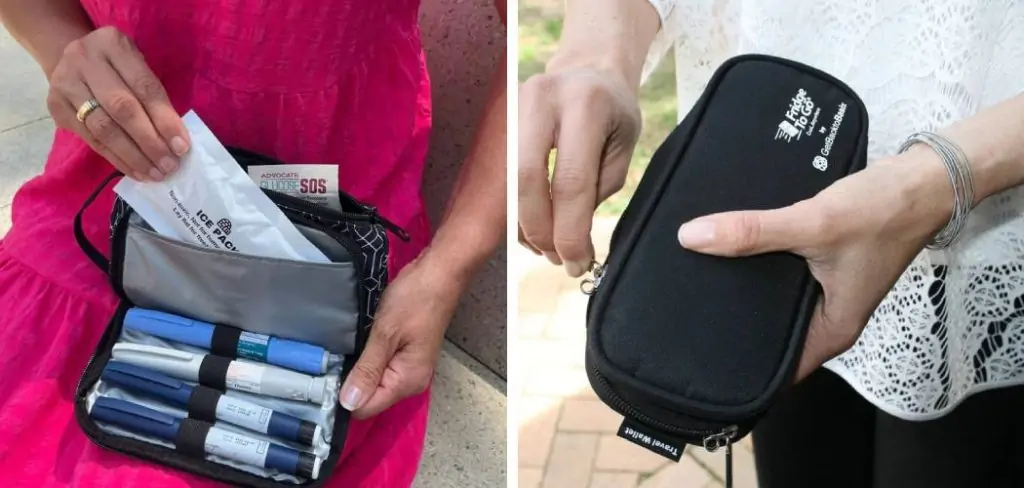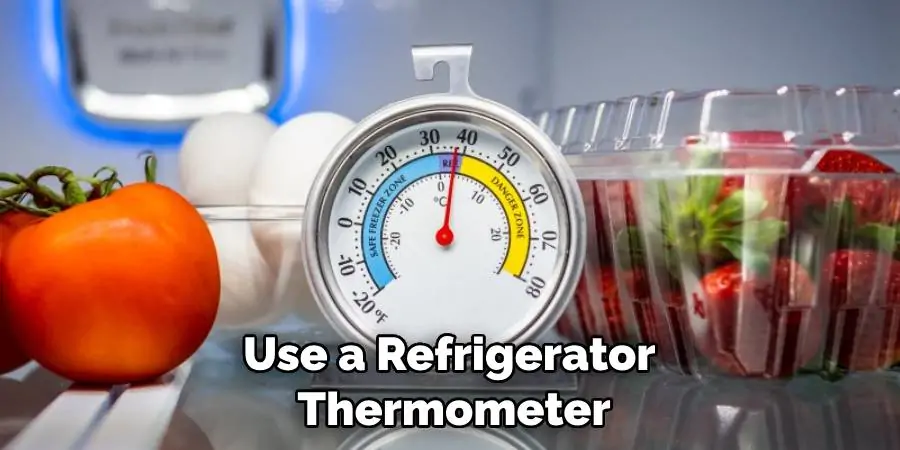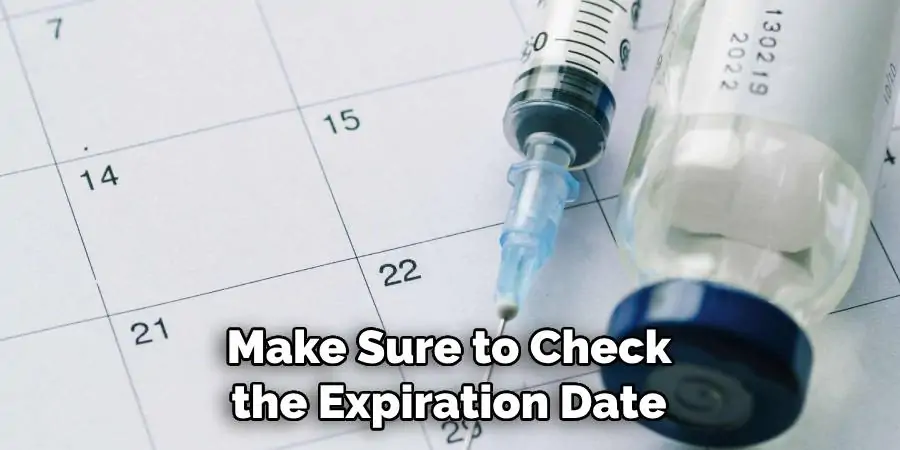Traveling with insulin can be a daunting task, especially when you consider the need for refrigeration. As someone living with diabetes, it is important to properly store and handle your insulin in order to keep it safe and effective. However, with proper planning and preparation, traveling with insulin that needs to be refrigerated can be done without any worries. In this guide, we will discuss some tips and guidelines on how to travel with insulin that needs to be refrigerated.

How Long Can Insulin Be Stored Outside of the Fridge?
Before we dive into the tips for traveling with insulin, it is important to understand how long insulin can be stored outside of the fridge. This will help you plan accordingly and ensure that your insulin stays safe during your travels.
Generally, unopened vials or pens of insulin can be stored at room temperature (between 59-86°F or 15-30°C) for up to 28 days. However, it is important to check the specific instructions on your insulin packaging as some types of insulin may have different storage guidelines.
Once opened, most insulins can be stored at room temperature for a shorter period of time, usually around 14 days. Again, it is crucial to follow the specific instructions provided by your healthcare provider or insulin manufacturer.
10 Tips for How to Travel With Insulin That Needs to Be Refrigerated
Traveling with insulin can be daunting, especially when it requires refrigeration. As someone managing a condition that demands constant care, you shouldn’t be held back in exploring the world due to your health needs. Storage, transportation, and other logistics can add a layer of complexity to your trips, but with the right preparation, you can ensure your insulin arrives safely and your adventure remains uninterrupted.
In this listicle, we’ll provide you with 10 indispensable tips for traveling with insulin that needs to be refrigerated. Whether you’re backpacking through Europe, on a business trip, or planning a cruise, these pointers will help you keep your essential medication in top condition.
1. Know the Ins and Outs of Storage
The first step to successful travel with refrigerated insulin is understanding how to maintain proper storage conditions. Insulin generally needs to stay at a temperature between 36°F and 46°F (2°C and 8°C) and should never freeze. Use a refrigerator thermometer at home to ensure that your insulin is stored correctly before you leave. This initial check helps you to confirm the temperature of hotel fridges and makeshift coolers during travel.

2. Invest in the Right Travel Container
Select an insulated travel case specifically designed for medications to maintain the required temperature for as long as possible. These containers are typically equipped with gel packs or cooling elements. It’s important to avoid using regular coolers, as they often drop below the safe temperature range for insulin.
3. Plan for Transportation Mishaps
When it comes to flying, there’s always a chance that your luggage could be delayed or lost. To prepare for this, always pack enough insulin in your carry-on for your entire trip. Double-check that your ice packs are frozen solid for your outbound trip and make sure to have a plan in place to keep them cold during your travels.
4. Check Airline Policies in Advance
Different airlines have various regulations regarding the transportation of medication. Contact your airline ahead of time to understand their policies and inform them that you will be traveling with refrigerated medication. This notification can sometimes speed up security processes.
5. Carry Documentation with You
A letter from your healthcare professional that lists all your medications—including insulin—can be invaluable. Also, ensure you have the original prescription labels on all your insulin vials or pens. Both items can help you through security checks with ease.
6. Pack Snacks and Non-Refrigerated Supplies
Low blood sugar can hit at any time, especially when you’re traveling. Pack a variety of non-perishable snacks and glucose tablets to ensure that you have quick access to what you need. Additionally, bring extra syringes or supply kits in case of emergency.

7. Keep an Emergency Kit On Hand
In case of an unforeseen delay or equipment failure, have a backup plan. Store a few unopened insulin vials or pens in a small, temperature-maintaining travel case within your carry-on. This minimizes the risk of damage and ensures you have immediate access to medication should you need it.
8. Understand Your Rights
In most countries, people with diabetes have the right to carry the necessary medical equipment on their person. Be aware of these laws and your rights in the locations where you’ll be traveling. Understanding these guidelines can provide peace of mind and swift actions if faced with any security concerns.
9. Select the Right Accommodations
Choose hotels that offer refrigeration and inform them of your specific insulin storage needs prior to arrival. This advance notice can ensure everything is in place for your arrival and help avoid any unnecessary logistic hurdles during your trip.
10. Relax and Enjoy Your Trip
After taking all these precautions, remember to relax. You’ve done your homework, so you can enjoy your trip with confidence that your insulin is well taken care of. Be in tune with your body, stay organized, and have a fantastic time wherever your travels take you.
By following these 10 tips for traveling with insulin that needs refrigeration, you can face your next adventure fully prepared. Ensuring your meds are well maintained and safely transported allows you to focus on the joy of traveling and the experiences that await. Safe travels!
5 Things to Consider When Traveling With Insulin That Doesn’t Need to Be Refrigerated
Aside from insulin that requires refrigeration, some types of insulin can be safely stored at room temperature for a certain period. However, there are still important factors to consider when traveling with these medications. Here are 5 things you need to keep in mind:

- Check the Expiration Date – Before you leave, make sure to check the expiration date of your insulin. If it’s close to expiring, consider asking your healthcare provider for a new prescription or plan your trip accordingly.
- Keep Track of Temperature Changes – Even if your insulin doesn’t require refrigeration, extreme temperatures can still affect its potency. Be mindful of leaving it in hot or cold environments for too long.
- Pack It in Its Original Packaging – Make sure to keep your insulin in its original packaging, complete with the prescription label and instructions. This is especially important if you’re traveling internationally as it can help with customs regulations.
- Prepare for Emergency Situations – Just like with refrigerated insulin, have a backup plan in case of unexpected delays or emergencies. Pack extra insulin and supplies in a separate bag in case your main supply gets lost or damaged.
- Research Destination Regulations – Different countries have varying rules and regulations when it comes to bringing medication into their borders. Take the time to research and understand these guidelines before you travel to avoid any complications during your trip.
These considerations may seem simple, but they can make a big difference in ensuring that your insulin remains safe and effective during your travels. As always, consult with your healthcare provider for personalized advice tailored to your specific needs. Now go out there and enjoy your adventures!
Frequently Asked Questions
What Happens if Insulin is Not Kept Cold?
If insulin is not kept cold, it can lose its effectiveness and may not be able to properly control blood sugar levels. This is because high temperatures can cause the proteins in insulin to break down, making it less effective.
What is the Best Way to Keep Insulin Cold While Traveling?
The best way to keep insulin cold while traveling is by using a specialized travel case or cooler that can maintain a cold temperature. You can also use ice packs or frozen gel packs to keep the insulin chilled, but make sure they are properly wrapped and do not come into direct contact with the medication.

Can We Carry Insulin in an International Flight?
Yes, you can carry insulin in an international flight. However, it’s important to research and understand the regulations of the country you are traveling to regarding bringing medication into their borders. Carrying a doctor’s letter that outlines your needs and the medication’s specifications can help streamline the process through customs and security.
Declare your insulin and any other related supplies at the security checkpoint to avoid any complications. Documentation should include not only the prescription but also a letter from your doctor stating you are a diabetic and require insulin. It’s always best to be proactive and prepared when traveling with medications.
Conclusion
In this guide, we’ve discussed 10 tips for how to travel with insulin that needs to be refrigerated and 5 things to consider when traveling with insulin that doesn’t need to be refrigerated. By following these guidelines, you can ensure the safe and effective transport of your medication while exploring new places. Remember to always consult with your healthcare provider before making any changes to your diabetes management routine, and have a fantastic trip! Keep exploring and discovering new places, without letting diabetes hold you back. Safe travels!
